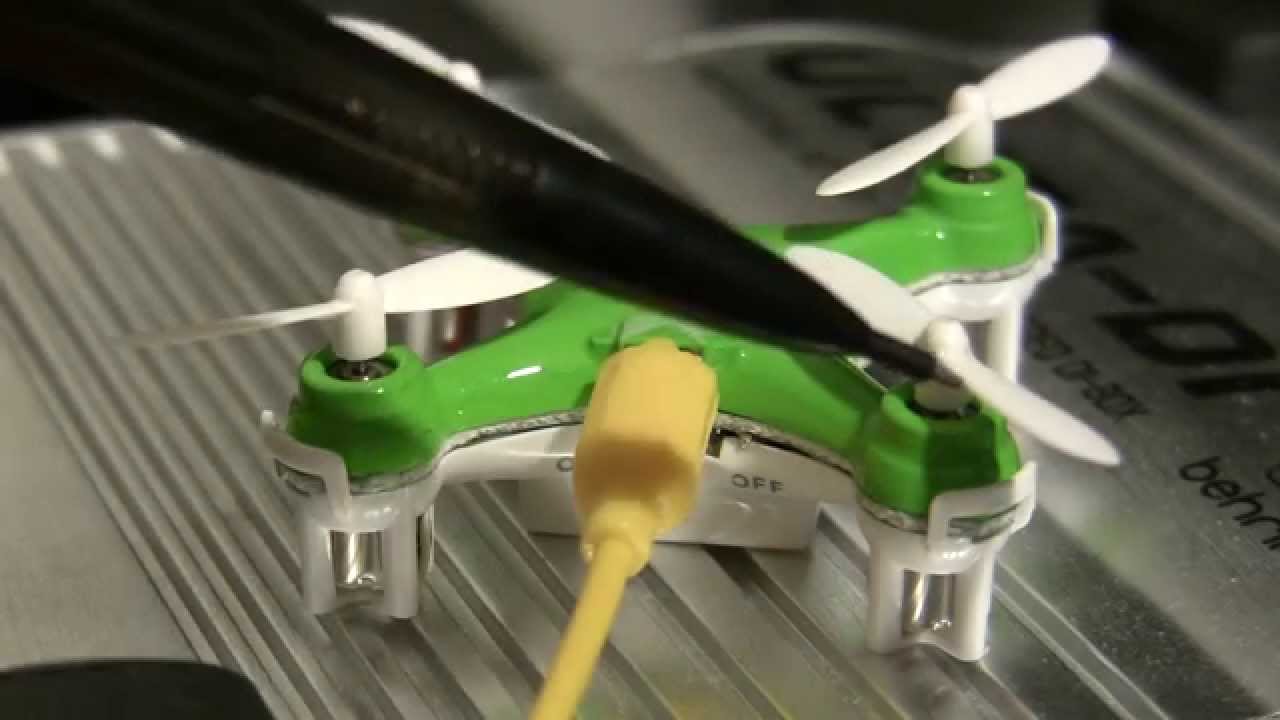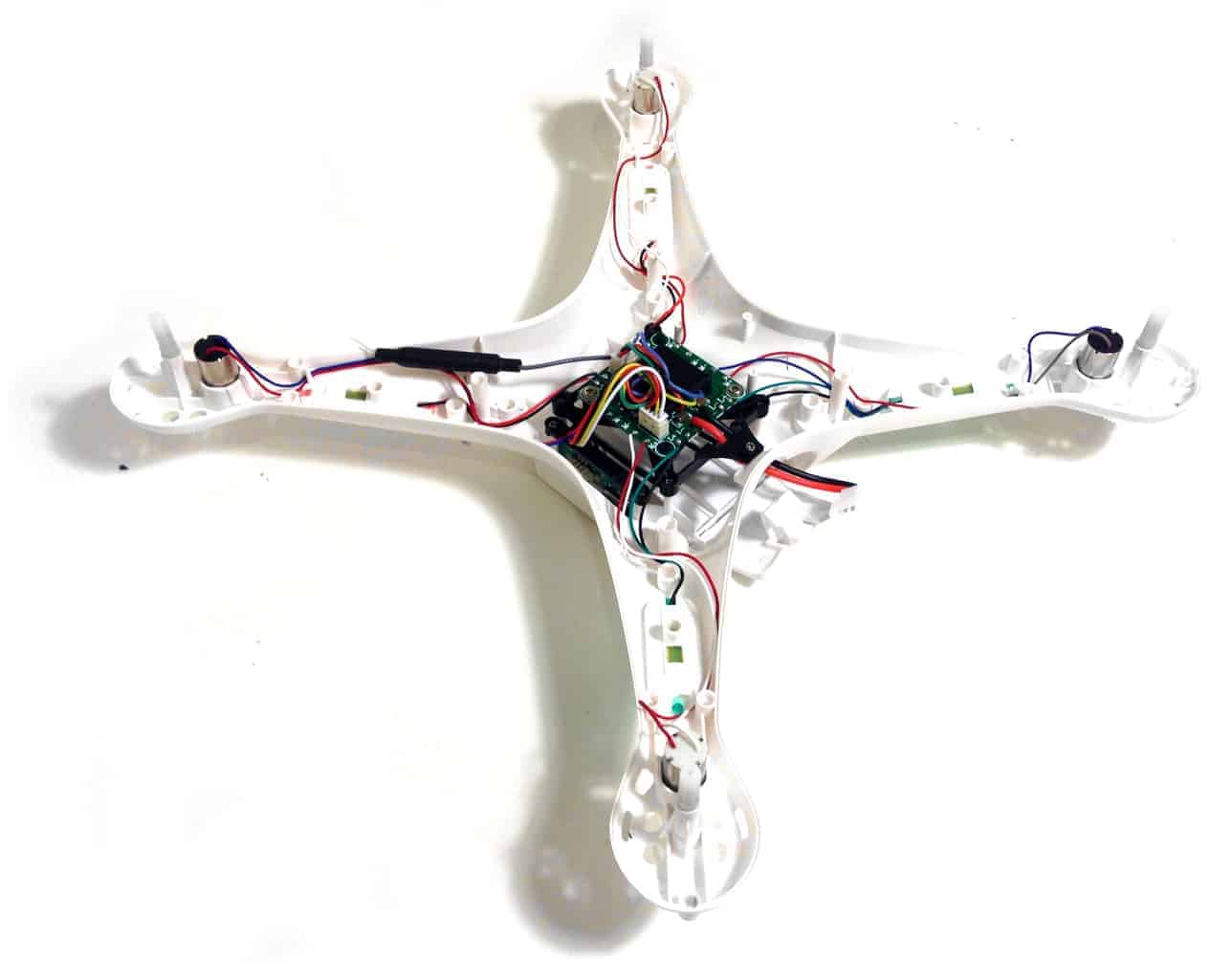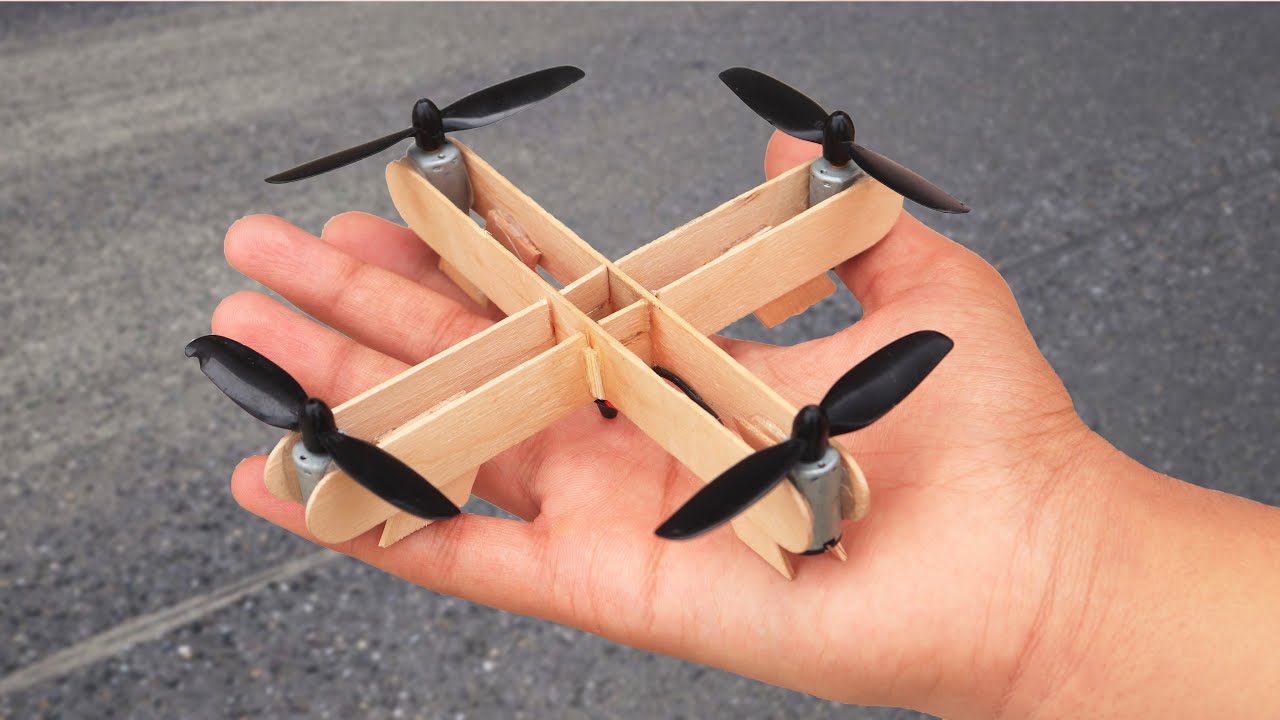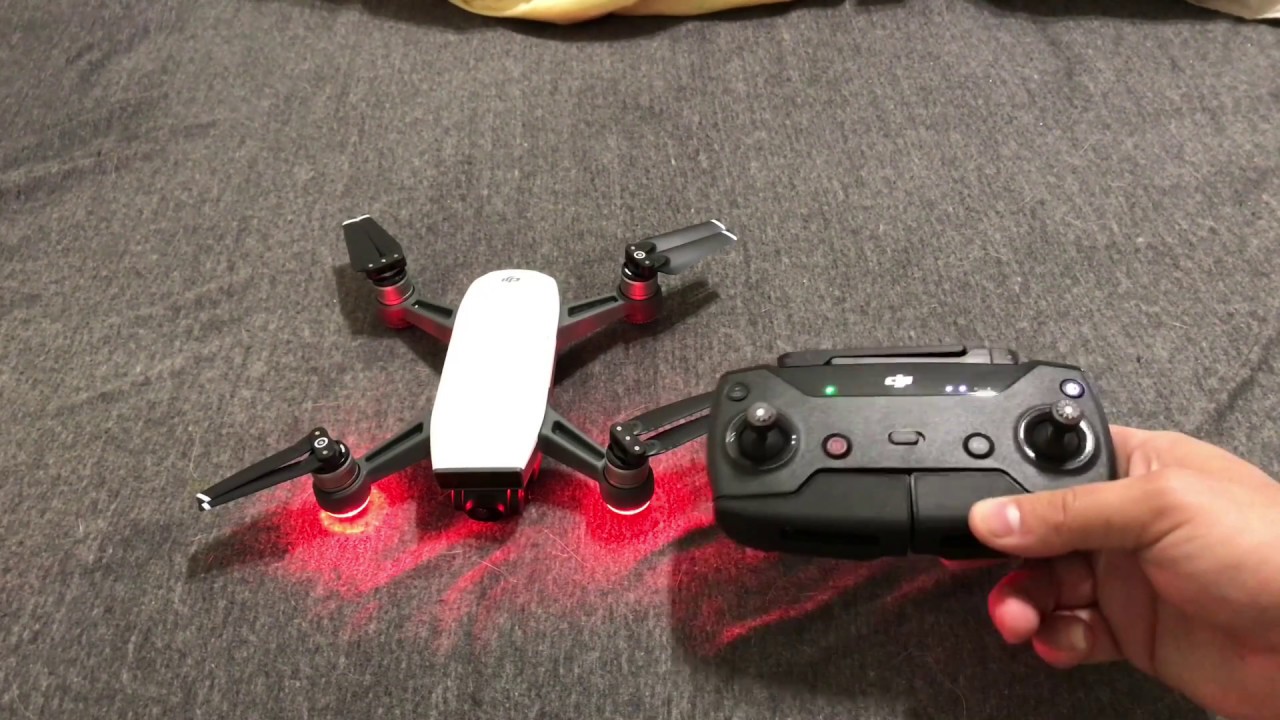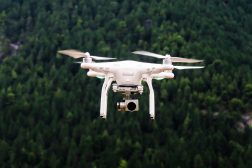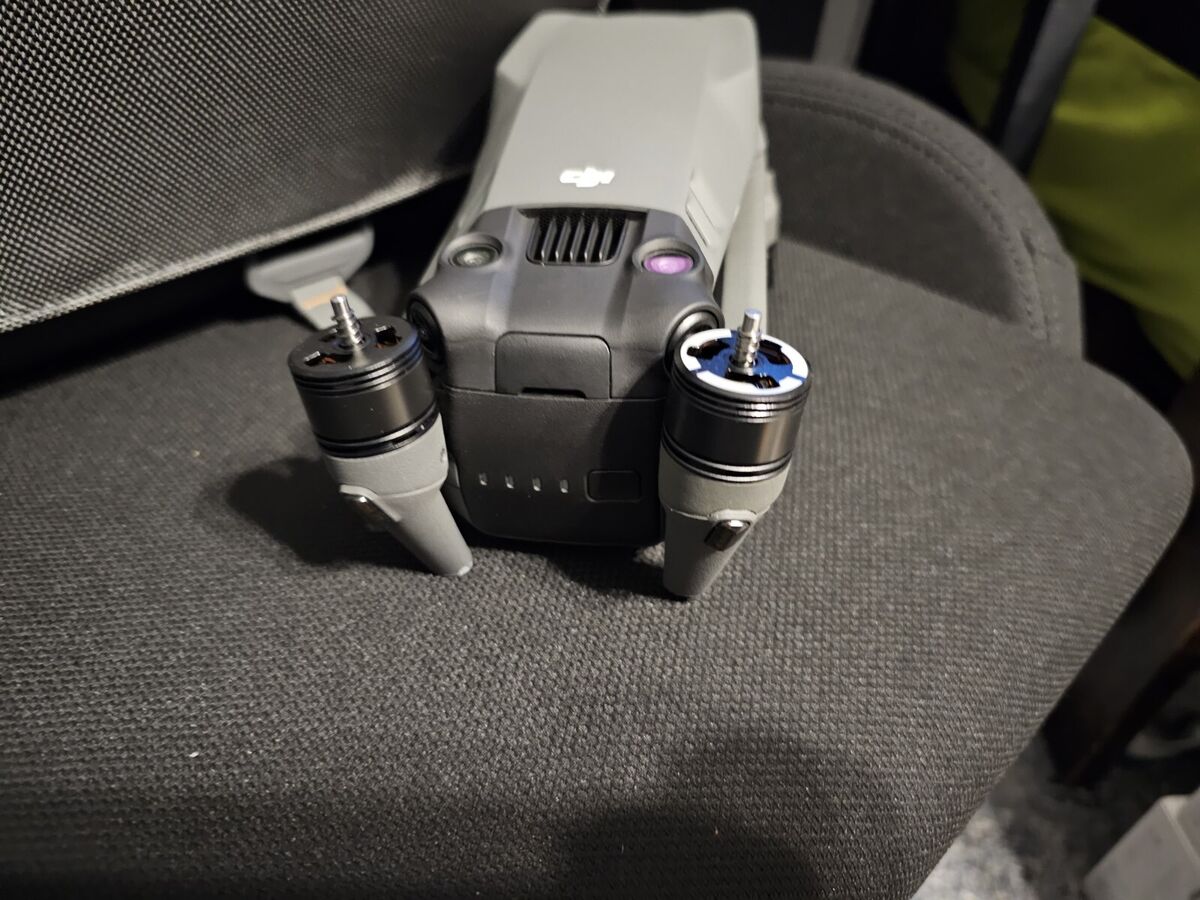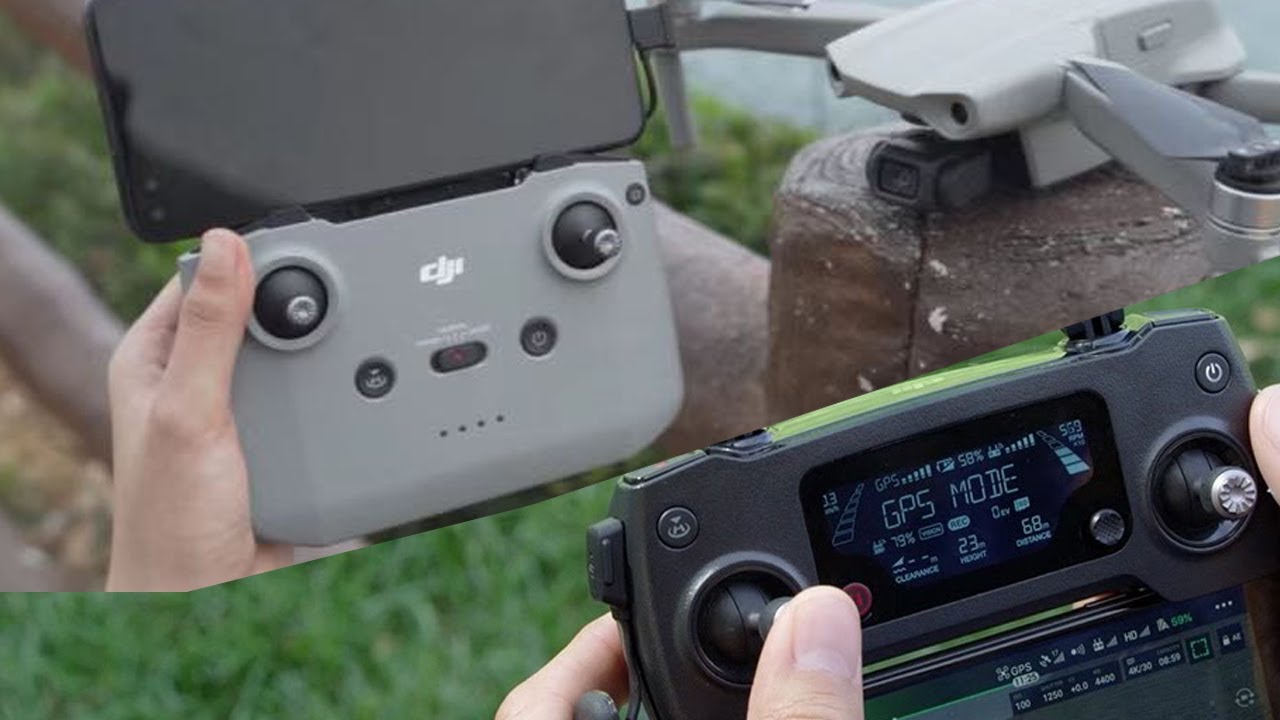Introduction
Welcome to the exciting world of aerial photography and videography! Drones have become increasingly popular in recent years, offering unique perspectives and capturing stunning images and footage from the sky. However, like any other cutting-edge technology, drones are not immune to occasional malfunctions and accidents. Whether it’s a broken propeller, a malfunctioning motor, or a damaged camera, it’s essential to know where to turn when your drone needs repair.
In this article, we will guide you through the process of finding reliable drone repair services. We’ll also provide you with valuable tips and tricks for DIY repairs and preventive maintenance to keep your drone in top shape. So, if you find yourself in a predicament where your drone is in need of fixing, fret not! We’ve got you covered.
Drones are complex machines that require technical knowledge and expertise to repair. Attempting to fix a drone without the necessary skills can result in further damage and void any applicable warranties. That’s why it’s crucial to know where you can find trusted professionals who specialize in drone repair.
From specialized drone repair shops to authorized service centers, there are several options available for getting your drone fixed. Additionally, we’ll explore the factors you should consider when choosing a drone repair shop, including their reputation, experience, turnaround time, and cost.
If you’re more of a DIY enthusiast, we’ve got you covered as well. We’ll share some useful tips and tricks for minor repairs that you can do yourself, such as replacing propellers, batteries, or even soldering small components. However, please keep in mind that DIY repairs are not recommended for major issues, and it’s always best to seek professional help when in doubt.
Cost is another important consideration when it comes to drone repairs. We’ll break down the different factors that can affect the overall cost, including the type of drone, the extent of the damage, and whether or not the repairs are covered by warranty.
Time is of the essence, especially if you have an upcoming project or event that requires your drone. We’ll discuss the typical repair times and factors that can affect the turnaround time, so you can plan accordingly.
Lastly, we’ll highlight the importance of preventive maintenance and provide you with some essential tips to keep your drone in optimal condition. By following these guidelines, you can minimize the risk of future repairs and ensure a longer lifespan for your beloved aerial companion.
So, without further ado, let’s dive into the world of drone repairs and discover the best options available for you.
Signs that Your Drone Needs to be Fixed
As a drone owner, it’s essential to be vigilant and proactive in identifying any signs that your drone might need to be repaired. Ignoring these signs can lead to more significant issues down the line and potentially put your drone at risk. Here are some common signs that indicate your drone needs professional attention:
- Erratic Flight Patterns: If you notice that your drone is flying in an unpredictable manner, veering off course, or losing stability, it could be a sign of a problem with the flight controller, gyroscopes, or motor.
- Unusual Noises: Strange or loud noises coming from your drone during flight or when powering on/off can indicate issues with the motors, propellers, or other internal components.
- Inconsistent Power: If your drone is experiencing sudden power losses or irregular battery performance, it may indicate a faulty battery or charging system that needs repair or replacement.
- Unresponsive Controls: If your drone doesn’t respond promptly or at all to your control inputs, it could be a sign of a communication problem between the remote controller and the drone itself, or other issues with the control system.
- Camera Malfunctions: If you’re noticing blurry images, video distortion, or your camera is not functioning at all, it’s a clear indication that you need to have your drone’s camera inspected and repaired.
- Physical Damage: Cracked or broken propellers, damaged landing gear, or other visible physical damage should not be ignored. These issues can affect the drone’s performance and stability, and immediate repair is necessary.
- Loss of Connectivity: If your drone frequently loses signal between the remote controller and the drone itself, it could indicate interference or communication issues that need to be addressed.
While these signs are not exhaustive, they are some of the most common indicators that your drone requires professional repair. Keep in mind that it’s always better to seek expert advice if you’re uncertain about the source of the problem or how to fix it yourself. Attempting to repair complex issues without the necessary expertise can lead to further damage and potential safety risks.
Now that you’re aware of the signs that your drone needs to be fixed, let’s explore where you can find reputable drone repair services to address these issues.
Where to Find Drone Repair Services
When it comes to finding professional drone repair services, there are several options available to you. Here are some of the most common sources where you can find reliable drone repair shops:
- Manufacturer Authorized Service Centers: Many drone manufacturers have their own authorized service centers where they provide repairs and support for their specific drone models. These service centers have trained technicians who are familiar with the intricacies of their brand’s drones and can provide reliable repairs using genuine parts.
- Specialized Drone Repair Shops: There are also independent repair shops that specialize in drone repairs. These shops have experienced technicians who are well-versed in repairing different types and models of drones. They often offer a wide range of services, including diagnostics, component replacement, and firmware updates.
- Online Drone Repair Platforms: In recent years, online platforms dedicated to connecting drone owners with repair technicians have gained popularity. These platforms allow you to submit repair requests online and ship your drone to the technician for diagnosis and repair. This option provides convenience, especially if you don’t have a local repair shop nearby.
- Local Hobby Stores and Drone Retailers: Some local hobby stores or drone retailers might offer repair services, especially if they have a dedicated technical team. They are a convenient option if you prefer a face-to-face interaction and want to support local businesses.
When choosing a drone repair service, it’s essential to consider a few factors to ensure you select the right one:
- Reputation: Look for repair services with positive reviews and a good reputation in the drone community. Check online forums, social media groups, and review websites to get an idea of other customers’ experiences.
- Experience and Expertise: Find out how long the repair shop or technician has been in the industry and their level of expertise in handling drone repairs. Experience plays a significant role in ensuring quality repairs and a thorough understanding of different drone models.
- Turnaround Time: Consider the repair shop’s average turnaround time. You’ll want your drone to be repaired and returned to you as quickly as possible, especially if you have upcoming projects or events. However, keep in mind that rush repairs might come at an additional cost.
- Cost and Warranty: Compare the repair costs among different service providers to ensure you’re getting a fair price. Additionally, inquire about warranties provided for the repair work and any parts replaced. A reputable repair shop should stand behind their work and offer some form of guarantee.
Now that you know where to find drone repair services and what factors to consider when choosing a repair shop, let’s delve into some tips and tricks for DIY drone repairs.
Factors to Consider when Choosing a Drone Repair Shop
When your drone is in need of repair, it’s vital to choose a reliable and competent drone repair shop. Here are some essential factors to consider when selecting a repair shop:
- Reputation and Reviews: Research the repair shop’s reputation and read reviews from past customers. Look for feedback regarding the quality of repairs, customer service, and overall satisfaction. A reputable repair shop should have positive reviews and a good track record.
- Experience and Expertise: Consider how long the repair shop has been in business and their level of expertise in handling drone repairs. An experienced repair technician is more likely to have encountered a wide range of issues and can provide accurate diagnoses and effective solutions.
- Specialization: Some repair shops specialize in specific drone brands or models. If you own a particular brand or model, it may be beneficial to choose a repair shop that specializes in that specific brand. They will have a deeper understanding of the mechanics and components of your drone, which can result in more precise repairs.
- Turnaround Time: Check the repair shop’s average turnaround time for repairs. You’ll want to choose a repair shop that can complete the repairs within a reasonable timeframe, especially if you rely on your drone for work or time-sensitive projects. However, keep in mind that faster repairs may come at an additional cost.
- Cost: Compare the repair costs among different repair shops. It’s important to understand the pricing structure – whether it’s a flat fee or based on the specific repairs needed. While it’s tempting to opt for the cheapest option, keep in mind that quality repairs may require a higher investment.
- Warranty: Inquire about the warranty provided for the repair work and any new parts being installed. A reputable repair shop should stand behind their work and offer a warranty or guarantee to ensure customer satisfaction. Be sure to understand the terms and conditions of the warranty before proceeding with the repairs.
- Communication and Customer Service: Evaluate the repair shop’s communication and customer service. Do they respond promptly to your inquiries? Do they provide clear and detailed explanations of the repair process and costs? A repair shop with excellent communication and customer service will keep you informed and address any concerns or questions you may have throughout the repair process.
By considering these factors, you can make an informed decision when choosing a drone repair shop. Remember, it’s essential to prioritize quality and expertise over the cheapest option to ensure your drone is in good hands.
Now that we’ve examined the factors to consider when choosing a drone repair shop, let’s explore some helpful tips and tricks for DIY drone repairs.
DIY Drone Repair: Tips and Tricks
While it’s always recommended to seek professional help for complex drone repairs, there are certain minor issues that you can fix yourself. Here are some useful tips and tricks for DIY drone repairs:
- Propeller Replacement: If you have a damaged or broken propeller, it’s relatively easy to replace it yourself. Make sure to select the correct propeller size and follow the manufacturer’s instructions for installation.
- Battery Replacement: If your drone’s battery is no longer holding a charge or has become damaged, you can replace it with a new one. Ensure that you purchase a battery compatible with your specific drone model and follow the proper safety guidelines for handling and replacing the battery.
- Camera Calibration: If you’re experiencing issues with your drone’s camera, such as blurry images or inaccurate colors, you can try calibrating the camera settings. Consult your drone’s user manual or the manufacturer’s website for instructions on how to calibrate the camera properly.
- Updating Firmware: Regularly updating your drone’s firmware can improve its performance and fix any software-related issues. Check the manufacturer’s website or the drone’s mobile app for the latest firmware updates and follow the instructions for updating.
- Soldering Small Components: If you have experience with soldering, you may be able to repair small components, such as broken wires or connections. However, be cautious and ensure you have the necessary skills and equipment to perform soldering safely and effectively.
- Cleaning and Maintenance: Regularly clean your drone and its components to prevent dirt, dust, and debris from interfering with its operation. Additionally, perform routine maintenance tasks such as lubricating moving parts and inspecting for loose screws or connections.
It’s important to note that DIY repairs are only suitable for minor issues and should be done at your own risk. If you’re unsure or uncomfortable with repairing your drone yourself, it’s best to seek professional help. Attempting to fix complex issues without the necessary expertise can lead to further damage or void any warranties.
By following these DIY tips and tricks, you can tackle simple repairs and maintenance tasks to keep your drone in good condition. However, always prioritize safety and know your limits when it comes to DIY repairs.
Now that we’ve covered some DIY drone repair tips, it’s time to explore the cost of drone repairs and how long they typically take.
How Much Does Drone Repair Cost?
The cost of drone repairs can vary widely depending on several factors, including the type of drone, the extent of the damage, and whether or not the repairs are covered by warranty. Here are some key considerations when it comes to the cost of drone repairs:
- Type of Drone: The cost of repairs can vary significantly based on the type and brand of drone you own. Higher-end drones with advanced features and technology often come with a higher price tag for repair services and replacement parts.
- Extent of Damage: The severity of the damage is another significant factor that determines the cost of repair. Minor issues such as propeller replacement or simple calibration may cost less compared to major repairs like motor replacement or camera module repair.
- Replacement Parts: If your drone requires replacement parts, the cost will depend on the specific components that need to be replaced. Some parts, such as propellers or batteries, are relatively inexpensive, while others, like camera modules or flight controllers, can be more costly.
- Warranty Coverage: If your drone is still under warranty, some or all of the repair costs may be covered by the manufacturer. Check the terms and conditions of your warranty to understand what is included and any limitations on coverage. Keep in mind that accidental damage or improper use may not be covered by warranty.
- Labor and Service Charges: Repair shops typically charge a labor fee for diagnosing and repairing your drone. The cost of labor can vary depending on the complexity of the repair job and the hourly rate of the repair shop or technician.
While it’s difficult to provide an exact cost range for drone repairs, as every situation is unique, it’s important to budget accordingly. Minor repairs and simple component replacements may cost anywhere from $20 to $100, while major repairs or complex issues could range from a few hundred dollars to several hundred, or in some cases, even exceed the cost of a new drone.
It’s worth noting that paying for professional repairs ensures high-quality work and genuine parts. Attempting to cut costs with unauthorized repair services or using low-quality aftermarket parts may lead to subpar results and further damage to your drone.
Now that we have discussed the cost factors, let’s explore how long drone repairs typically take.
How Long Does Drone Repair Usually Take?
The duration of drone repairs can vary depending on the complexity of the issue, the availability of replacement parts, and the workload of the repair shop. While it’s challenging to provide an exact timeline for every repair scenario, here are some general guidelines regarding the duration of drone repairs:
- Simple Repairs: Minor repairs such as replacing a propeller or performing a calibration can typically be completed within a few hours to a day. These repairs are relatively straightforward and don’t require extensive troubleshooting or waiting for replacement parts.
- Common Repairs: Repairs that involve replacing components such as motors, landing gear, or antennas may require a bit more time. These repairs often require disassembling the drone, testing and installing the new components, and reassembling the drone. In general, common repairs can take anywhere from a couple of days to a week.
- Complex Repairs: Major repairs that involve intricate troubleshooting or extensive replacement of multiple components, such as a damaged camera module or flight controller, can take longer. These repairs may require ordering specific parts, which can add to the repair time. Complex repairs can range from a week or two up to several weeks, depending on the availability of parts and the workload of the repair shop.
- Manufacturer or Authorized Repair Service: If you send your drone to the manufacturer or an authorized repair service, the repair time can vary. Manufacturers often have a standardized repair process and may take longer to complete the repairs due to the volume of drones they receive. It’s essential to contact the manufacturer or authorized service center for an estimated repair timeline.
While these are general estimates, it’s crucial to keep in mind that the actual repair time can be influenced by various factors. Delays can occur due to unforeseen complications, back-ordered parts, or high demand for repair services.
Communicating with the repair shop or technician can provide a more accurate idea of the repair timeline. They can provide updates on the progress of the repair and inform you of any potential delays.
Now that we’ve explored the typical repair duration, let’s move on to discussing preventive maintenance to avoid the need for frequent repairs.
Preventive Drone Maintenance: How to Avoid Repairs
Taking proactive steps to maintain your drone can help prevent the need for frequent repairs and ensure its longevity. Here are some essential tips for preventive drone maintenance:
- Read and Follow the User Manual: Familiarize yourself with the manufacturer’s recommended maintenance procedures and guidelines outlined in the user manual. This will help you understand how to properly care for your drone and identify any specific maintenance requirements.
- Pre-Flight Inspections: Before each flight, conduct a thorough pre-flight inspection of your drone. Check for any visible damage, loose connections, or signs of wear and tear. Inspecting your drone before flying can help you identify potential issues that need to be addressed before they become more severe.
- Keep it Clean: Regularly clean your drone, especially after flights in dusty or dirty environments. Use a soft brush or compressed air to remove any debris from the motors, propellers, and other components. Be cautious not to damage any delicate parts during the cleaning process.
- Proper Storage: Store your drone in a safe and dry environment. Use a protective case or bag to shield it from dust, moisture, and physical damage. Avoid leaving your drone exposed to extreme temperatures or direct sunlight, as this can negatively impact its performance and lifespan.
- Check Firmware and Software Updates: Regularly check for firmware or software updates released by the manufacturer. Keeping your drone’s firmware and software up to date can help resolve bugs, improve performance, and address any potential security vulnerabilities.
- Calibration: Periodically calibrate your drone’s compass and accelerometer to ensure accurate flight and positioning. Consult the user manual or manufacturer’s instructions for the proper calibration procedure.
- Battery Maintenance: Follow the manufacturer’s guidelines for battery maintenance, including proper charging and discharging procedures. Avoid overcharging or completely draining the batteries, as this can reduce their lifespan and performance. Store batteries in a cool and dry place when not in use.
- Safe Flying Practices: Adhere to safe flying practices and local regulations when operating your drone. Avoid flying in hazardous weather conditions, restricted airspace, or crowded areas. Following safety guidelines reduces the risk of accidents and potential damage to your drone.
By incorporating these preventive maintenance practices into your routine, you can minimize the likelihood of encountering issues that require repairs. Regular inspections, cleaning, and adherence to the manufacturer’s recommendations will contribute to a longer and more reliable drone lifespan.
With the knowledge of preventive maintenance, as well as the information on finding repair services, factors to consider when choosing a repair shop, DIY repairs, repair costs, and repair durations, you are well-equipped to handle any drone repair needs that may arise in the future.
Conclusion
As a drone owner, understanding where to find reliable drone repair services and how to properly maintain your drone is crucial for its longevity and performance. Whether you opt for professional repairs or try your hand at DIY fixes, it’s essential to prioritize safety and quality.
When your drone shows signs of malfunction or damage, such as erratic flight patterns or unusual noises, it’s important to address the issue promptly. Finding reputable repair services can help restore your drone to working condition efficiently. Manufacturer authorized service centers, specialized drone repair shops, online repair platforms, and local hobby stores are some of the available options.
When choosing a repair shop, factors such as reputation, experience, turnaround time, cost, and warranty coverage should be considered. By selecting a reputable repair shop or technician, you can have peace of mind knowing that your drone is in capable hands.
In cases of minor repairs, such as propeller replacements or simple calibrations, DIY fixes can be a viable option. However, it’s important to know your limits and seek professional help for complex repairs or major issues. Following manufacturer guidelines, regular maintenance practices, and safe flying practices can help prevent the need for frequent repairs.
The cost of drone repairs can vary based on factors such as the type of drone, extent of damage, and warranty coverage. It’s important to budget accordingly and consider the overall value of your drone when assessing repair costs. Similarly, repair durations can range from minor repairs that can be completed within a few hours to complex repairs that may take weeks, depending on the severity of the damage and availability of parts.
By staying informed about drone repair options, performing preventive maintenance, and taking necessary precautions, you can enjoy a seamless flying experience and avoid disruptions due to repairs. Remember, it’s always recommended to seek professional assistance when in doubt or for major repairs to ensure the safety and optimal performance of your drone.









